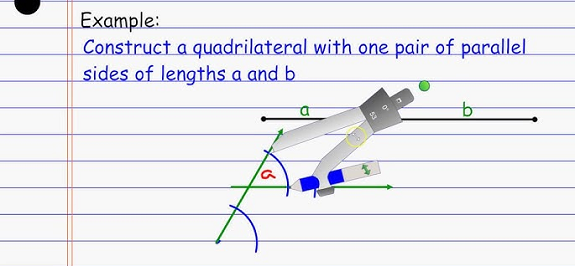Unit 3 Lesson 6 Constructing Parallel and Perpendicular Lines
Lesson 6: Constructing Parallel and Perpendicular Lines

Lesson Overview
Perpendicular Postulate
What You Will Learn
- how to construct parallel and perpendicular lines.
Overview
In this lesson, you will learn to construct parallel and perpendicular lines.
Essential Understanding
You can also use a straightedge and a compass to construct parallel and perpendicular lines.
This course is based on a textbook that is viewable by clicking on the textbook icon. Keep the textbook open while you go through the lesson so that you may refer to it throughout the lesson.
Additional Resources
Lesson 6: Constructing Parallel and Perpendicular Lines
Prepare for Application
Instructions
You have now studies Constructions of Parallel and Perpendicular Lines. It is now time to demonstrate your learning.
Try the activities below on your own. You should be able to answer these before beginning the practice.
Create a journal extra called 'Unit 3: Lesson 6 activities' and do these activities in your journal.
Activity 1
Use a straightedge to draw . Construct so that at point F.
Activity 2
Draw and a point Z not on . Construct so that
Activity 3
Refer to problem 1 on page 182 of your textbook.
Why must lines l and m be parallel?
Activity 4
- Draw a segment. Label its length m. Construct quadrilateral ABCD with , so that and .
- Suppose you and a friend both use the steps in problem 2 on page 183 of your textbook to construct ABYZ independently. Will your quadrilaterals necessarily have the same angle measures and side lengths? Explain.



